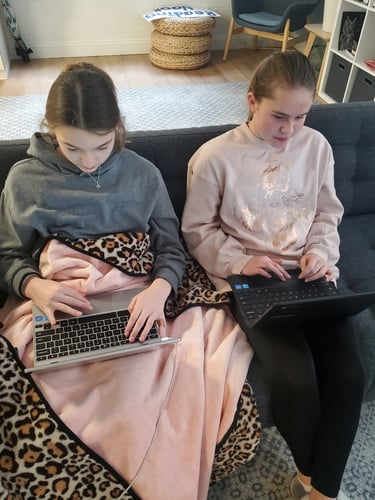
The Rockets Quest is a session-long project in Acton Middle School. To complement this project, learners simultaneously focus their Genre (writing) theme on science fiction short stories. Learners dive into science fiction by learning about its history, characteristics, and cultural influences. After watching a video detailing the evolution of science fiction, learners are challenged to consider whether “the asking of many questions or the providing of a few great solutions is more valuable from a work of science fiction” as they embark on their sci-fi journey.
As part of the prewriting step in the writing process, learners research the following elements typically woven into a successful science fiction story: the concept of “show, don’t tell”; symbols and metaphors; characters with oddity, objective, and obstacle; point of view; setting; backstory; conflict; and a conclusion with a twist or bang. After creating a list outlining what each of these elements entail, learners explore the 365 Tomorrow website and read three flash science fiction stories of their choosing. Learners then choose their favorite story of the three they read and identify the elements that are the most and least powerful. One Acton Middle School learner said, “The main character was the most powerful part of the story because their actions and thoughts kept me engaged.”
Learners then focus on brainstorming and creating outlines for their stories. They discuss the differences between science fiction and science fantasy. Learners are asked, “Is the greater feat for a writer understanding high-level science or the ability to explain it in simple terms?” Acton Middle School learners unanimously agreed that the greater feat for a writer is the latter because writers should explain science in a way that readers are able to understand.
Following the discussion, learners create outlines of their stories that include information about their main characters, settings, conflicts, and messages. Upon completing their outlines, learners gather together and facilitate a rapid brainstorming session. To begin, each learner is allotted one minute to share the key points of their story. When the minute is up, the rest of the group has two minutes to help the learner think through their story even more deeply. Some of the questions asked include: 1) What does your protagonist want; 2) What are the unexpected consequences of your protagonist’s actions; and 3) How can you explain this part scientifically?
Learners also review the six elements that make up a story’s structure. This structure is often depicted as a “plot mountain” or “plot roller coaster” and includes the set up, inciting action, rising action, climax, falling action, and resolution. After identifying each of these elements while reading a short story aloud, learners create their own “plot roller coasters” to prepare for the next step in the writing process.